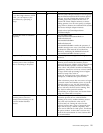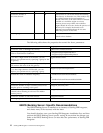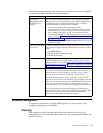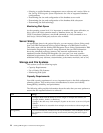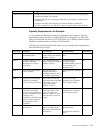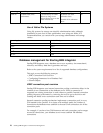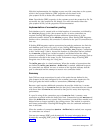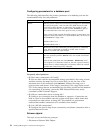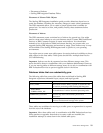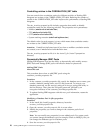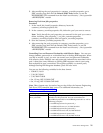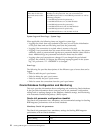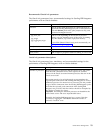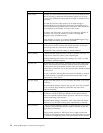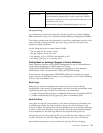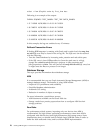
v Placement of Indexes
v Sterling B2B Integrator Database Tables
Placement of Schema Table Objects
The Sterling B2B Integrator installation guide provides directions about how to
create the database, including the necessary changes to some critical parameters.
The DDL statements allow you to create a simple schema that is suitable for
general use. You need to review, and possibly modify, these statements before
production.
Placement of Indexes
The DDL statements create a minimal set of indexes for general use. You might
need to create more indexes to suit your business needs. Contact IBM Professional
Services or IBM Customer Support to create more indexes. You should also
maintain a list of the indexes added and ensure that they are present after you
upgrade Sterling B2B Integrator and monitor its usage. These indexes may or may
not be added to the Sterling B2B Integrator and is specific to your operating
environment.
You might want to create more table spaces for storing indexes in addition to those
table spaces for the base tables. Table spaces should have multiple data files for
I/O load balancing.
Important: Indexes can also be separated out into different storage areas. This
action should be done in coordination with your database administrator. However,
if you are moving tables to different storage areas, do so only in coordination with
IBM Professional Services to prevent upgrade issue in the future.
Database tables that can substantially grow
The following table lists some of the tables that are defined in Sterling B2B
Integrator experience substantial input, output, and rapid growth.
Table name Table function
DATA_TABLE These tables hold the binary payload of documents that
are used for processing within Sterling B2B Integrator.
v DOCUMENT
v CORRELATION_SET
Contain document metadata that is used for searchability
and enablement of various document processing tasks.
WORKFLOW_CONTEXT Contains step status and business process flow
information.
ARCHIVE_INFO Holds lifespan information that pertains to all business
processes and document storage in the system.
These tables are candidates for moving to a table space or segment that is separate
from the rest of the database.
Important: Move these tables only in coordination with IBM Professional services.
When patches or upgrades that need to re-create a table are installed, the
installation attempts to create them in the default table space.
Performance Management 19



